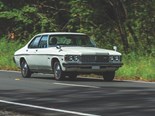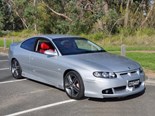1965 Cortina GT500 vs 1969 Cooper S: Oz vs Euro #2
 1965 Cortina GT500
1965 Cortina GT500

 1965 Cortina GT500
1965 Cortina GT500

 1965 Cortina GT500
1965 Cortina GT500

 1965 Cortina GT500
1965 Cortina GT500

 1965 Cortina GT500
1965 Cortina GT500

 1965 Cortina GT500
1965 Cortina GT500

 1965 Cortina GT500
1965 Cortina GT500

 1969 Cooper S
1969 Cooper S

 1969 Cooper S
1969 Cooper S

 1969 Cooper S
1969 Cooper S

 1969 Cooper S
1969 Cooper S

 1969 Cooper S
1969 Cooper S

 1969 Cooper S
1969 Cooper S


|
|
1965 Cortina GT500
|

|
|
1965 Cortina GT500
|

|
|
1965 Cortina GT500
|

|
|
1965 Cortina GT500
|

|
|
1965 Cortina GT500
|

|
|
1965 Cortina GT500
|

|
|
1965 Cortina GT500
|

|
|
1969 Cooper S
|

|
|
1969 Cooper S
|

|
|
1969 Cooper S
|

|
|
1969 Cooper S
|

|
|
1969 Cooper S
|

|
|
1969 Cooper S
|
Aussie GT500 meets its nemesis

|
|
Oz vs Euro: 1965 Cortina GT500 vs 1969 Cooper S
|
1965 Cortina GT500 vs 1969 Cooper S
You might imagine that pairing up the front-drive, cutting-edge (at the time) Mini Cooper S with the old-school, rear-drive, utterly conventional Cortina GT500 is an odd one. But in reality, this is quite a logical match-up.
Just for starters, both are Bathurst winners: the GT500 in 1965 with Bo Seton and Midge Bosworth at the wheel and the Cooper S famously filling the first nine outright places in 1966 with Bob Holden and Rauno Aaltonen in the winning steed.
But even beyond those giant-killing racetrack performances, both these cars were also the work of geniuses. The Cooper S was the ultimate expression of Alec Issigonis’s brilliant little box, and the GT500 was developed by Harry Firth with just one goal in mind: to win Bathurst.
On paper, the Cortina GT500 was nothing special. A little two-door body, leaf springs at the rear, a pushrod 1.5-litre four-cylinder engine and a four-speed manual gearbox.
But the real genius of the thing lay in its bomb-proof design and the rat-cunning of the man himself, Harry Firth. The rules for the Bathurst 500-mile race in those days required at least 250 imported cars to be sold for eligibility. But a locally-made car only had to sell 100. So Harry was given the job by Ford of developing the GT500 locally for that precise task.
Harry added a bigger camshaft, a Weber carburettor, played with compression and head design, and then fitted a second fuel tank and twin fuel fillers to save time in the pits. The car was also sold with an air-cleaner (in the boot) that wasn’t fitted. Why? So it could run at Bathurst as delivered – without one. Pure genius.
The Mini, meanwhile, was spotted by Brit race engineer John Cooper who recognised a potential competition car when he saw it. With changes such as disc front brakes and a souped-up twin-carb engine, the Mini took the racing world by storm.
But it wasn’t just circuit racing – the Mini also won the Monte Carlo Rally three times (although it was controversially stripped of its 1966 one-two-three result by the dodgy French organisers).
It was also fast enough for Australian police forces to use as a highway patrol vehicle, and the sight of seven-foot of angry copper emerging from one was sometimes enough to take the tension out of a roadside-chat situation.
Driving the Mini now confirms that while it’s surprisingly roomy inside, its driving position is seriously on drugs.
The steering wheel is almost flat and sits way out in front of you and those teensy-weensy pedals have your knees under your chin. Even the speedo and main switches are weirdly located – in the centre of the dash and a long stretch away.
The Cortina is a much less confronting environment and, in fact, the row of four central gauges high up on the dashboard are fabulous, both to look at and to glean information from.
The wood-rimmed tiller is a nice touch and the seats are quite soft and pillowy but seem to hold you well. Both cars have brilliant vision in any direction.
The Cortina starts easily although the ignition barrel action feels a bit weedy, and it soon settles into an idle that tells you there’s a bit going on here. Snick the tall shifter into first and ease out the super-heavy clutch and the GT500 pulls away with absolutely no fuss.
On the move, the gearshift remains accurate and light and you soon forget about that rock-hard clutch (although a half-day in peak-hour traffic might remind you). The little Ford steers accurately and with a fair degree of feedback and there’s very little body-roll.
That engine is a proper highlight, too, and while it might have just a hundred horsepower or so, short gearing and a feisty nature makes the absolute most of that.
It revs hard and gets truly snarly as you get beyond about 4000rpm. Which is fine for fanging around, but less wonderful when you consider it’s pulling those sorts of revs in top at highway speeds.
The real – and only – disappointment is in the braking department. There just isn’t a whole lot going on when you stand on the middle pedal. At first I thought it was just a lack of braking feel, but the first corner entry revealed that it’s actually a lack of braking. Period.
By comparison, the Cooper S pulls up brilliantly, even with front rotors the diameter of a DVD. It’s a bit lighter than the Ford, of course, but there’s simply more stopping to be had.
There’s also a bit more going on offer and the 1275cc A-series mill in the Cooper feels as game as Ned Kelly (who was finally being buried in consecrated ground the day we drove these cars).
The little four will take full throttle from low revs without complaint and then buzz its little three-bearing crank all the way to the redline in the next gear, with no let-up in either punch or enthusiasm for the job at hand.
The gearshift feels vague at first but actually works on the move and the chassis is utterly controllable via either the tiller or the gas pedal.
Okay, so a cat’s-eye reflector hit in the Mini feels like a speed hump in any other car, but there’s no getting around the fact that tying the Cooper S down so hard gave it brilliant turn-in and corner speed.
It’s also hugely entertaining and just pips the Cortina for driver involvement and outright fun. Then again, nothing this side of a hot tub party with the Middleton sisters is more fun than a hot brick.
SPECIFICATIONS
1965 Ford Cortina GT500
Produced: 1965-66
Body: 2-door sedan
Engine: 1498cc 4cyl, OHV, 8v
Power: 62kW @ 6000rpm
Torque: 138Nm @ 3600rpm
Weight: 795kg
Gearbox: 4-speed manual
Suspension: MacPherson struts, anti-roll bar (f); live axle, leaf springs (r)
Brakes: discs (f), drums (r)
0-80km/h: 8.3sec*
0-400m: 18.2sec*
Top speed: 167km/h*
price new: $2966 (1965)
* Wheels April 1966
1969 Morris Cooper S
Produced: 1965-71
Body: 2-door sedan
Engine: 1275cc 4cyl, OHV, 8v,
Power: 56kW @ 5900rpm
Torque: 107Nm @ 3000rpm
Weight: 650kg
Gearbox: 4-speed manual
Suspension: Hydrolastic
Brakes: discs (f), drums (r)
0-80km/h: 8.2sec*
0-400m: 17.9sec*
Top speed: 154km/h*
price new: $2280 (1965)
* Wheels April 1966
Our owners:
Ford Cortina GT500:
 |
Geoff Geoff had such a soft spot for this particular Cortina GT500 that he bought it twice! It first appeared in his shed in 1992, left in 1998 and returned in 2002. "I learnt to drive in a Cortina," he says. "I wanted a GT500 at 18 but couldn't afford one. I bought a GT in 1965 and fell in love with Cortinas." |
Mini Cooper S:
 |
Glen Glen's Mini Cooper S has sat in a shed covered in dust for the majority of its time in his care. He bought it around 10-11 years ago, but life got in the way and it went unused until about two years ago. Having brushed the dust off and done the interior, he plans to spruce up the seats and give it some extra go with a set of extractors over winter. |
The contenders:
- Holden EH S4 v Jaguar Mk II 3.8
- Ford Cortina GT500 v Morris Cooper S
- Valiant VF Pacer v Fiat 125T
- Holden LC Torana GTR XU-1 v BMW 2002tii
- Ford XW Falcon GT-HO Phase II v Mercedes-Benz 300SEL 6.3
***
Search used:
>> Search for a used Cortina here
>> Search for a used Mini Cooper here
Unique Cars magazine Value Guides
Sell your car for free right here
Get your monthly fix of news, reviews and stories on the greatest cars and minds in the automotive world.
Subscribe

.jpg)






.jpg)



